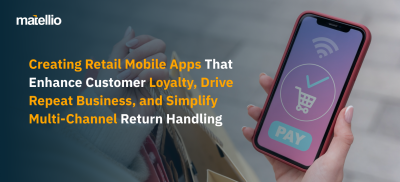
The advancement in the field of IoT has attracted attention from various sectors. Sectors such as the consumer market, business, health, manufacturing, education, research, and many others are leveraging IoT to improve key aspects of the business. The education sector, too, is exploring advanced digital infrastructure to improve learning and teaching abilities. IoT has made it easier for them to improve the teaching ecosystem even for challenging subjects such as Science, mathematics, engineering, etc. IoT devices can innovate learning processes in classrooms and labs to increase student motivation quickly, and more effectively.
No wonder the global IoT in education market size is predicted to reach USD 11.3 billion by the end of 2023.
Some of the tech-savvy educational institutions have already started implementing IoT development services as a key aspect of their work. On the other hand, some such organizations are still planning on picking up the digital pace and analyzing where IoT fits best in their processes. For each of such organizations, we’ve got all the answers here.
How IoT in Education Solves Challenges in the Education Industry?
As the market is changing, so is the requirement of stakeholders in the education industry. While traditional teaching and learning methods were enough in the past, today’s students demand a more personalized teaching experience. Let’s take a look at the challenging aspects of the education industry that IoT can solve.
1. Obsolete Curriculum
The changing time needs schools to constantly update their curriculum. Not many schools, however, are able to meet this requirement. An obsolete curriculum leaves little or no room for the students to stay competitive. As a result, once they start their careers, they fail to offer the right set of skills.
2. Standard Testing Methods
Standardized assessments are considered an objective way to assess students’ skills and competence. Manual assessments are prone to biases and promote favoritism.
3. Poorly Educated Educators
At certain times, students are stuck with poorly-skilled teachers and professors due to talent shortage. This causes students to lack basic skills like memorization, comprehension, and problem-solving. It is required for the schools to identify the right talent and ensure upskilling for the teachers.
4. Low Classroom Engagement
The traditional approach of lecture-discuss-test fails to keep students engaged. Teachers need to adopt active interaction and personalized learning to help students of every type.
What are the Key Benefits of Custom IoT Development in Education?
Implementation of IoT in educational processes enables professionals to optimize education delivery and make learning more efficient. They can also connect better with students and ensure on-site safety.
Here is what IoT brings to the table for the education industry:
1. School Management Efficiency
IoT systems bring tools for improving the core processes in the education stream. They help stakeholders to obtain the right set of data at their fingertips to make informed business decisions.
2. Real-Time Data Collection
IoT product development in education helps garner data in real-time to help schools track aspects such as security, student progress, professional training initiatives, and more. This helps them stay dynamic in their approaches to make the educational process fruitful for everyone.
3. Safety and Security
IoT systems analyze the school environment constantly to identify potential security threats. They also alert admiration in case of incident so that the right measures can be taken on time.
4. Better Student Engagement
IoT offers a wide range of tools such as smart boards, AR/ VR kits, and more to the educators to keep the classes interactive. This build engagement for the students and help them learn better.
IoT in Education Use Cases: Where You Can Implement IoT in Your Institutional Processes?
1. Smart Boards
Smartboards are replacing the traditional overhead projectors in schools. Their ability to offer interactive learning experiences is helping teachers to engage students, and make learning easier for them. They create visual aids to explain concepts, which makes it easier for the students to grasp them no matter how tricky they are. Visual learners can observe the whiteboards, which tactile learners can learn by touching them. Touch screen systems allow teachers to run programs in a few clicks, and navigate across the curriculum easily.
Smart boards are also preferred for many other reasons as well. For instance, they are low maintenance, offer access to extensive online resources, and are environmentally sustainable. At the same time, they help students ace their tests with higher grades, improve learning, enhance literacy, boost attentiveness and increase comprehension.
2. Attendance Automation
Attendance monitoring is a day-to-day task for the teachers. However, a significant amount of time goes into making and maintaining the attendance records. The time consumed in the processes can be dedicated to teaching the class, thereby increasing the content delivery.
IoT-based attendance monitoring systems can come in handy here. Educational institutions can install biometric systems to record student attendance or use RFID tags on the ID cards to automatically record the attendance as students enter the classroom. This eliminates the chances of manual error and avoids discrepancy. Teachers will be able to devote more time to their primary concern, that is, teaching. They can also send a direct message to the parents in case of absence.
This also comes in handy when calculating students’ attendance at the end of semester. All you need to do is pull out the records and have the automated systems calculate everything for you. IoT-based attendance monitoring can also be applied to staff attendance.
Also Read: A Complete Guide on eLearning Software Development
3. IoT-Based On-Premise Security Systems
Educational institutions are not well equipped to detect the red flags for security-related incidents. They also lack a proper contingency plan to act in case of theft, sexual assault, abuse, etc., besides other emergencies.
IoT-based systems allow schools to put an efficient security detection system in place. The sensors and IoT devices deployed at various locations within the premises monitor the campus round-the-clock. They sense the red flags and immediately alert the authorities about the potential security threat, its location, and more.
These systems can also help detect incidents of a fire breakout, short circuit, etc., and activate alarms with exact problem areas for a quick resolution. Having all the information at its fingertips allows school administration to take the right measures on time to limit the casualties.
4. Special Learning Tools for Students with Disability
Specially-abled students found it really challenging to learn and reflect on new things. Schools were unable to match up with the requirements of such students, causing them to lag in the competition.
IoT systems have made it possible even for such students to learn new things just like any other student. For instance, students with hearing disabilities can use connected gloves that translate verbal speech to sign language using tablets.
Students suffering from ADHD can get distracted easily. To help them, wearable devices in the form of headbands record the brain activity and help students focus better on the classroom.
Visually impaired students can leverage IoT systems to view enlarged screens to decrease their dependence on caretakers and teachers.
5. IoT-Based School Management System
Schools have limited resources and spend most of their time on day-to-day activities such as information transfer, roll calls, etc. This not just keeps the resources from the important tasks, but also increases the operating cost.
IoT enabled connected devices to help eliminate such instances. They can use smart grids for energy management, automate processes, and help their administrative teams to eliminate manual tasks. This channels the investment in a more profitable direction, as well as optimized resource utilization.
Another aspect of school administration comes in the form of inventory management. As the amount of inventory to manage increases, so does the pressure on the teams to manage it.
Schools can install IoT systems like connected sensors in the storage rooms that send notifications when stocks with RFID tags for desks, textbooks, and cleaning supplies run low.
IoT in Education: How to Begin with IoT App Development for Your Institution?
1. Understand If Your Business is Ready for IoT
The first step would be to analyze your business processes and identify the gaps that you can fill with IoT solutions. Engaging IoT consulting services can help streamline this process by providing expertise on how to effectively implement these solutions. After this, it is important to understand that IoT brings a lot of data within itself. It is essential to channel this data in the right direction and find ways to manage it.
a. Do you have the right EdTech solutions to manage the data pool?
IoT solutions for education can only deliver the expected results with the right set of data. This data only grows with time. Therefore, while saving this data, you also need to ensure the right configuration and architecture with regulatory compliance. Cloud computing in education system plays a crucial role in managing this growing data by offering scalable storage and efficient data processing capabilities.
b. Is your security infrastructure ready for new challenges?
The growing number of connected devices also puts you at risk of data theft. Therefore, you need to ensure that your data is protected by advanced solutions powered by encryption, blockchain, cybersecurity frameworks, etc.
c. How will you integrate existing school management ERPs with the new solutions?
It is important to design standardized interfaces and solutions that allow seamless data exchange without compromising the existing systems. You need to ensure that your solutions maintain uniformity and work efficiently without delays.
Our business consulting experts can help you here. Having experience of interacting with similar customers in the past, they have the knowledge to help you figure out the most feasible solution for your requirements.
Read More: How IoT Affects the Future of Web Development?
2. Shortlist an Education IoT App Development Company
The next step is to find the right partner to build an IoT system for your educational institution. Here is what to look for when shortlisting potential technology partners:
- How much experience do they hold in the area of eLearning software development?
- What is their experience in developing applications in IoT realm?
- What is the quality of the solutions they have delivered?
- How have their clients rated them for their services?
- What additional USPs do they have?
3. Start IoT Development
Once you have the right technology partner by your side, you can start with the development and deployment of the product. An expert custom IoT app development company, we follow the following process to build IoT-enabled education apps.
- Phase one: Discovery to highlight all important features
- Phase two: SRS creation and scope freezing
- Phase three: UI/UX development
- Phase four: Backend-end development
- Phase five: QA and testing
- Phase six: Bug fixes
- Phase seven: Deployment
Time to Start Your IoT Project in Your Educational Organization?
As experts in the industry, we strongly agree. As technologies continue to mature and evolve, the role of IoT in education will also constantly create an impact. Emerging disciplines will benefit educators and students alike, through data analysis, complex assistants, and more. To remain competitive, it is important for institutions to transform digitally with state-of-the-art IoT solutions.
At Matellio, we offer all-around IoT development services for education institutions to stay relevant. Our services include everything from the stage of strategy to hardware development and deployment to IoT app development. Our value-added services also include:
- A rich portfolio that speaks of our quality
- Delighted clients who vouch for our services
- Cost-effective, flexible pricing models
- Extensive range of development services
- Agile development methodology
- Round-the-clock team availability
To begin with IoT development us right away, request a free quote.







